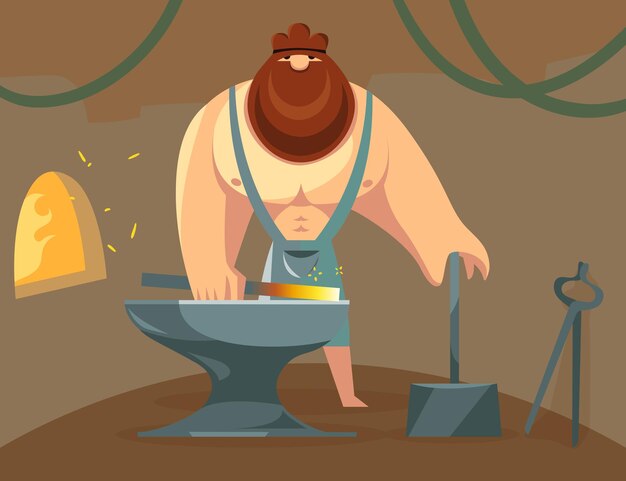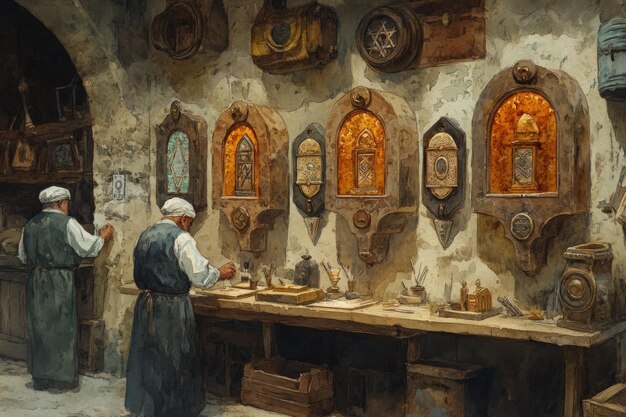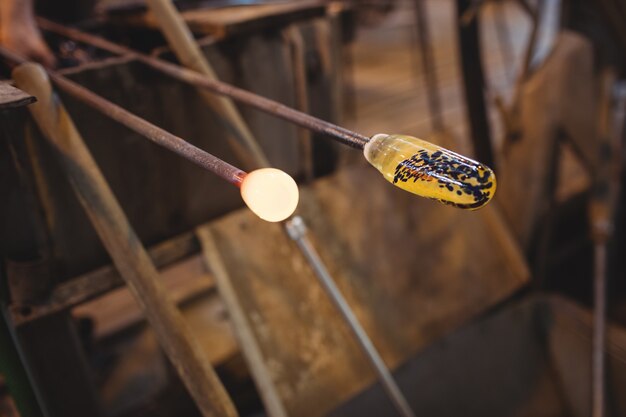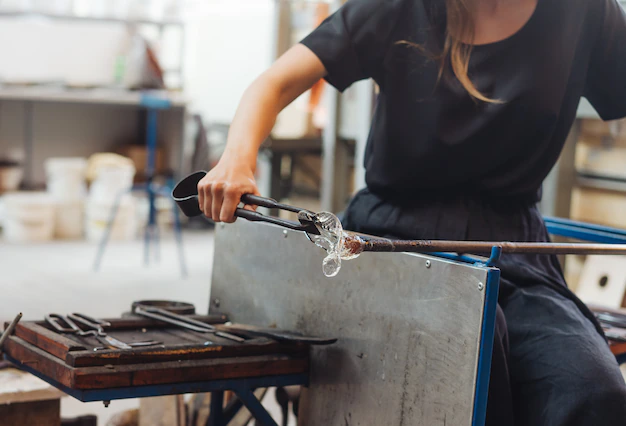History of Glassmaking
From Ancient Craft to Modern Innovation
Glassmaking has evolved from ancient artistic expressions to modern technological marvels, influencing art, architecture, and daily life. This journey through time highlights the key milestones in the development of glassmaking techniques and styles.
Ancient Glassmaking (3500 BCE – 500 CE)
The earliest evidence of glassmaking dates back to around 3500 BCE in Mesopotamia and Ancient Egypt. Initially, glass was a luxury material reserved for elites due to the complexity of its production.
Key Developments:
- Beads and Small Ornaments: Early glass was used for decorative items, often made by core-forming techniques.
- Glass Blowing (1st Century BCE): The invention of glassblowing in the Roman Empire revolutionized production, making glass more accessible for containers and vessels.
- Colored Glass: Early glassmakers often added minerals like copper and cobalt to create vibrant colors.


Medieval and Islamic Glassmaking (500 CE – 1500 CE)
During the medieval period, glassmaking spread across Europe and the Islamic world, with innovations in both artistic design and functional use.
Key Developments:
- Stained Glass Windows (Medieval Europe): Used extensively in Gothic cathedrals, stained glass combined art and religious storytelling.
- Islamic Glass Art (8th – 12th Century): Innovations included enamel painting and gilding, with intricate geometric patterns.
- Venetian Glass (Renaissance Period): Murano glassmakers became famous for their delicate, refined glassware, including the invention of cristallo (clear glass).
History of Glassmaking
Glassmaking has transformed from ancient luxury to an essential material in modern life. From decorative stained glass to scientific innovations, the craft continues to blend art, utility, and sustainability. Today, glass remains a symbol of creativity and progress, reflecting humanity’s artistic and technological advancements throughout history.


Industrial Revolution and Mass Production (1600 – 1800s)
The Industrial Revolution transformed glass from handcrafted art to a widely available commodity, driven by technological advancements.
Key Developments:
- Lead Crystal (17th Century): George Ravenscroft introduced lead glass, known for its brilliance and clarity.
- Sheet Glass for Windows: Flat glass became more accessible, contributing to modern architecture.
- Pressed Glass (19th Century): Machines enabled mass production of decorative glass items like tumblers and vases.
Modern Glassmaking (1900s – Present)
The 20th century marked groundbreaking developments in both artistic glassmaking and industrial applications.
Key Developments:
- Art Nouveau and Art Deco Movements: Artists like René Lalique and Louis Comfort Tiffany popularized artistic glass with flowing designs and colorful stained glass.
- Scientific Glass (Borosilicate Glass): Pyrex introduced heat-resistant glass for laboratory and kitchen use.
- Float Glass Process (1959): Pilkington developed the float glass technique, revolutionizing flat glass production for windows and mirrors.
- Sustainable Glass: Modern efforts focus on recycled glass and eco-friendly manufacturing techniques.

Stay connected
We will write a sub-headline that introduces your call to action to website visitors here